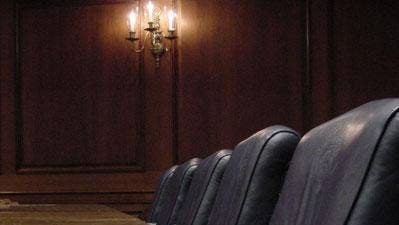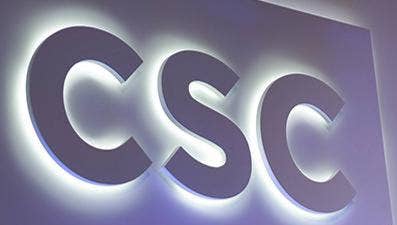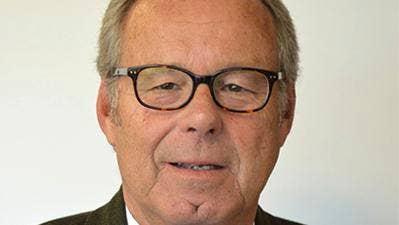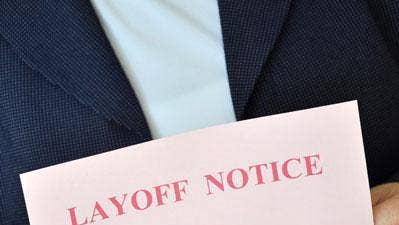Ex-DXC EVP Stephen Hilton’s Suit Against DXC: What You Need To Know

The Lawsuit
Former DXC Technologies executive vice president Stephen Hilton, who was once in the CEO succession plan and in charge of 120,000 employees, was fired from DXC in July 2018.
Hilton sued the company last week in U.S. District Court for the Southern District of New York, accusing the company of seven counts of breach of contract, and seeking $14.3 million as well as damages after DXC failed to pay him $20 million in severance benefits and stock options.
Hilton accused DXC CEO Mike Lawrie of ordering changes to the vesting dates on Hilton’s stock options “without contractual or other legal authority.” He said Lawrie had earlier boasted of preventing stock option payments to the man Hilton replaced, according to the complaint.
DXC has not responded in court, but issued a statement last week saying Hilton’s suit has “no merit.”
The 36-page complaint goes into great detail about Hilton’s time at DXC, Lawrie’s management style, and how the CEO is allegedly viewed by other executives at the company.
Click through the slideshow to find out 12 things you should know about the lawsuit.

The Interview, The Dinner And An Odd Moment In 2014
Hilton worked as managing director, the CIO of IT Infrastructure, and also the head of corporate real estate and travel at Credit Suisse in 2014 and was hoping to make the next jump in his career when consultants from McKinsey steered him towards Mike Lawrie at CSC, the lawsuit states.
“Hilton met Lawrie for an interview and dinner in December 2014. Also at the dinner was Joanne Mason (“Mason”), who was Lawrie's Chief of Staff,” the lawsuit states. “The dinner was pleasant, though it had one peculiar moment. Lawrie ordered a steak, but then Lawrie let his subordinate, Ms. Mason, divide up the meat for him. She took the plate from her boss and, using her boss's steak knife, split the pre-carved the meat onto a plate for him and for herself, then split the side dish, and then gave the plate back to her boss.”
“This peculiar moment was a vivid early example of an important feature of Lawrie's personality: his inability to draw the line between the personal and the professional. It was also a vivid early demonstration of Lawrie's close dependency on Mason. Hilton could tell, when the dinner concluded, that Lawrie liked him and wanted him for the position. After further interviews at CSC's Virginia headquarters in early 2015, CSC offered Hilton, and Hilton accepted, a position as Executive Vice President and General Manager for CSC's Global Infrastructure Services ("GIS").”

His Rise At CSC
In his offer letter, Hilton was given a salary of $650,000. He was handed responsibility for a division of CSC with an annual P&L of approximately $4 billion, employing approximately 15,000 people around the world, the suit states.
“When Hilton assumed control of GIS, the division had been missing its internal budget, set by Lawrie, by several hundred million dollars a year. Hilton immediately began making changes, including cancelling programs and refocusing the organization on operational efficiencies. But it quickly became evident to Hilton that Lawrie's internal budgets were largely aspirational. For example, while the GIS unit missed the internal budget targets set by Lawrie for GIS, both of the first two years Hilton was in charge, Lawrie praised Hilton as a success, both in one-on-one meetings and in before other senior executives in CSC management meetings.”
“It also became evident to Hilton, by the summer of 2015, that Lawrie’s management style was in some respects toxic. Hilton repeatedly witnessed Lawrie verbally abuse his subordinates, and Hilton repeatedly saw Lawrie make business decisions not based upon metrics and performance, but based upon Lawrie's sense of whether an employee was sufficiently loyal or subservient to Lawrie personally.”

Early Wins, Early Warning Signs, ‘Money On The Table”
During his rise, Hilton was handed numerous stock awards by CSC, which -- between options and grants -- totaled more than 120,000 shares.
“Hilton also built a reputation within CSC for conceiving and executing creative business deals (especially with CSC's IT vendors) to increase CSC's profitability, something that can be particularly important to a company actively contemplating a change in control,” the suit states. “To provide one typical example among many, one early transaction led by Hilton, called Zircon, saved CSC $35 million in operating expenses a year for five years. Such deals won repeated praise from Lawrie.”
“Hilton also came to learn that Lawrie had a pattern of terminating subordinates shortly before their stock grants would vest, finding various ways to avoid paying out compensation that was owed. Lawrie gloated, for example, about how much money (in the form of unvested stock) Steve Hilton's predecessor "left on the table" when CSC fired him.”

DXC Is Formed, Lawrie – And Consultants – Draft “Radical” Model For New Company
In April 2017, Hewlett Packard spun off its Enterprise Services division into a new company, which then acquired CSC to form DXC. According to the lawsuit, through the entire merger process, Lawrie leaned heavily on outside consultants to advise on the structure of the new company, spending $40 million with McKinsey & Co.
“Through these outside consultants, Lawrie and Mason (who was still his chief of staff, and who had also been appointed as the chief human resources officer of CSC) took the lead roles in sculpting the corporate structure of the new DXC,” the suit states. “Lawrie wanted a so-called ‘functional model’ for DXC, with corporate operations organized into three divisions by function: ‘Build,’ ‘Sell’ and ‘Deliver.’ Each of these three divisions would be headed by an EVP: ‘Build’ by Eric Harmon (who ultimately left DXC in the 1st Quarter of 2018), ‘Sell’ by Mike Nefkins (who also ultimately left DXC in the 1st Quarter of 2018), and ‘Deliver’ by Steve Hilton.”
“Lawrie described this new model as radical for a services company, something he had never previously implemented. Lawrie stated that ‘time would tell’ if this new model worked.”

A Souring Relationship
According to the lawsuit, following the merger Hilton's title was changed to Executive Vice President, Head of Global Delivery. His salary was raised to $700,000 a year. As Head of Global Delivery, Hilton would manage approximately 120,000 DXC employees worldwide plus approximately 60,000 contractors, with a total expense base of approximately $14 billion across 6,000 clients and 70 countries.
After the merger, Hilton and Lawrie agreed to cut the “delivery” budget by $2.7 billion, however Lawrie wanted the cuts to happen quickly, while Hilton wanted to draw them out to avoid impacts on performance, the suit states. At the same time, Hilton and Mason clashed, with Hilton telling consultants that Mason ran a “chaotic” operation in HR.

Lawrie’s Relationship Strained With Other Executives
Hilton observed that Lawrie's (pictured) treatment of many of his subordinates grew worse under the stress of the merger and its aftermath, the lawsuit states.
“DXC executives who had come from Hewlett Packard were often taken aback by the conduct of their new CEO,” Hilton said. “Several such executives approached Hilton separately for advice about how to handle Lawrie and Mason, whom they quickly came to see was very close to Lawrie.”
“Hilton was an obvious choice of a confidante: He is a calm man, compassionate and honest,” the suit states. “Hilton felt it was his responsibility to be candid about Lawrie's strengths and weaknesses as a leader. These conversations were one-on-one or in very small groups, were limited to senior management, and were always professional in tone. In other words, they were the run-of-the-mill interactions that occur daily in every large organization as coworkers navigate their workplace relationships.”

Hilton Served ‘Brazen Lie’ At Last Supper With Lawrie
After his falling out with Mason, conflict on the pace of cutting $2.7 billion from the budget, and the troubles integrating various executives, Hilton said he soon became the target of Lawrie’s “particular brand of bullying.” The two met for dinner in the second quarter of 2017. It would be their last such one-on-one dinner, and “it was alarming,” the suit stated. At the table, Lawrie told Hilton there had been “no change in control” and he was in control of whether a former CSC employee stock had vested after the merger, the suit states.
“Hilton was taken aback by Lawrie's brazen lie. But Hilton saw it for what it was. Lawrie was testing Hilton's loyalty, testing whether Hilton could be bullied, whether Hilton would stand up for his own interests (in his stock grants and severance rights) in the face of his boss's lies. Lawrie was also threatening Hilton, saying that as Hilton's boss he would not be constrained by contracts, that he would order DXC to deprive Hilton of his rights to pay and severance if and when it suited him.”

Hilton’s Legacy At DXC
During his first year at DXC, Hilton (pictured) reduced global delivery’s workforce by 20 percent, saved hundreds of millions in annual IT expenditures, and he conceived of, and launched Bionix, born from a similar program he had launched at CSC, called operational data mining, according to the lawsuit.
“Bionix revolutionized how DXC ran its IT operations, and allowed DXC to eliminate approximately 8,000 ‘man-years’ of work (with a corresponding reduction of the workforce) in 2017, all with minimal negative impact to service quality,” the lawsuit states. “Bionix will allow DXC to reduce its workforce by approximately 8,000 more in 2018, with total savings of $445 million per year. Bionix has been among DXC's most successful internal initiatives, and is something Lawrie repeatedly boasted about in earnings calls and to DXC clients.”
Indeed, last Thursday during DXC’s most recent earnings call – seven months after Hilton’s termination and the day after he filed suit -- Lawrie mentioned Bionix four times to investors, saying it allowed the company to push down headcount by 14,000 through efficiencies. He said the program’s deployment in the company’s GIS segment led to profit margins of 17.5 percent, up 320 basis points year over year, Lawrie said.
“The GIS margin expansion was driven by our ongoing global deployment of Bionix, delivery center rationalization and the benefit of some final milestone achievements on a few of our contracts,” Lawrie told investors on the Feb. 7 call.

Lawrie Fires Hilton
In May 2018, Hilton was told to report to the company’s offices in Virginia. There, he was handed a memo from Lawrie saying he was fired, but the company was offering him a 60-day cure period in which to turn around his performance.
Lawrie said Hilton had failed to cut $1 billion in expenses. He said Hilton had also not been a good “executive sponsor” to AWS.
“You were responsible for developing a favorable relationship with AWS,” Lawrie wrote in the memo, which is an exhibit in the lawsuit. “You have put little effort into this and have failed to fulfill your responsibility, even to the point that AWS questions your absence from the relationship.”
Lawrie said he had no trust in Hilton and believed he was trying to get fired.
“This has resulted in complete loss of confidence and trust in you by myself and other executives,” Lawrie wrote. “Indeed, it has come to my attention that you have made repeated statements that you are trying to get me to fire you. Your actions constitute both ‘material misconduct’ and a ‘substantial and willful failure’ to render services, as set forth in the applicable Cause definitions.”
Sixty days later, finding Hilton had not turned around his performance, Hilton was fired with cause, meaning he would lose his severance benefits.

Hilton Fires Back
In the lawsuit, Hilton addresses Lawrie’s complaints, saying none of them constituted “cause” and it was all pretext anyway: “Lawrie simply didn’t want to work with Hilton anymore.”
“Senior executives at DXC consistently missed the targets set by Lawrie's internal budgets. Lawrie's internal budgets were universally understood to be purely aspirational. Indeed, the rule set for regional bonus payouts was that if Lawrie promulgated a budget requiring a given department to generate $X in revenue and profit, the head of that department and their regional management would receive an annual bonus as long as they achieved 80% of $X. So, in 2018, at the same time Lawrie claimed to be dissatisfied with the level of cuts achieved by Global Delivery, DXC was paying bonuses to most of the heads of the six regional sales divisions and two industry-based sales divisions serviced by Global Delivery, none of whom had met their budgeted revenue or profit targets.”
Hilton also said he had developed a good relationship with AWS, as he had done with Dell EMC, another DXC partner he worked with. He also dismissed the notion he was undermining Lawrie by talking to executives about him as “silly.”
“As Lawrie knows, his leadership style is abrasive at best; by May 2018 Hilton was the only Executive Vice President left among the three original heads of ‘Build,’ ‘Sell,’ and "Deliver,’ “ the suit stated. “The notion that the occasional, run-of-the-mill pep talks Hilton had with other executives about Lawrie had a material effect on morale or constituted insubordination is silly.”

The Aftermath
According to the lawsuit, after he was fired, Hilton was not paid what CSC and DXC promised: none of the benefits under his Severance Agreement he was due, and all of his outstanding Restricted Stock Units and Stock Options were cancelled.
Hilton said after the May 15 letter, he kept a close watch on his stock grants which were managed by Fidelity.
“Hilton observed that someone had altered the vesting dates of every one of those tranches,” the suit states. “Specifically, the vesting dates were altered to July 27, 2018, just beyond the 60-day cure period provided in the May 15 letter. Hilton contacted Fidelity, the broker for his DXC stock grants, to inquire why this change had been made. Fidelity informed Hilton that the change had been made upon the unilateral instruction of DXC.”
The suit states that, Lawrie caused Hilton's stock vesting dates to be postponed “without contractual or other legal authority” because Lawrie knew DXC owed Hilton in excess of $20 million in compensation.
“Lawrie hoped to force Hilton to ‘leave money on the table’ when Hilton left DXC—just as Lawrie boasted he had done with Hilton's predecessor,” the suit states.